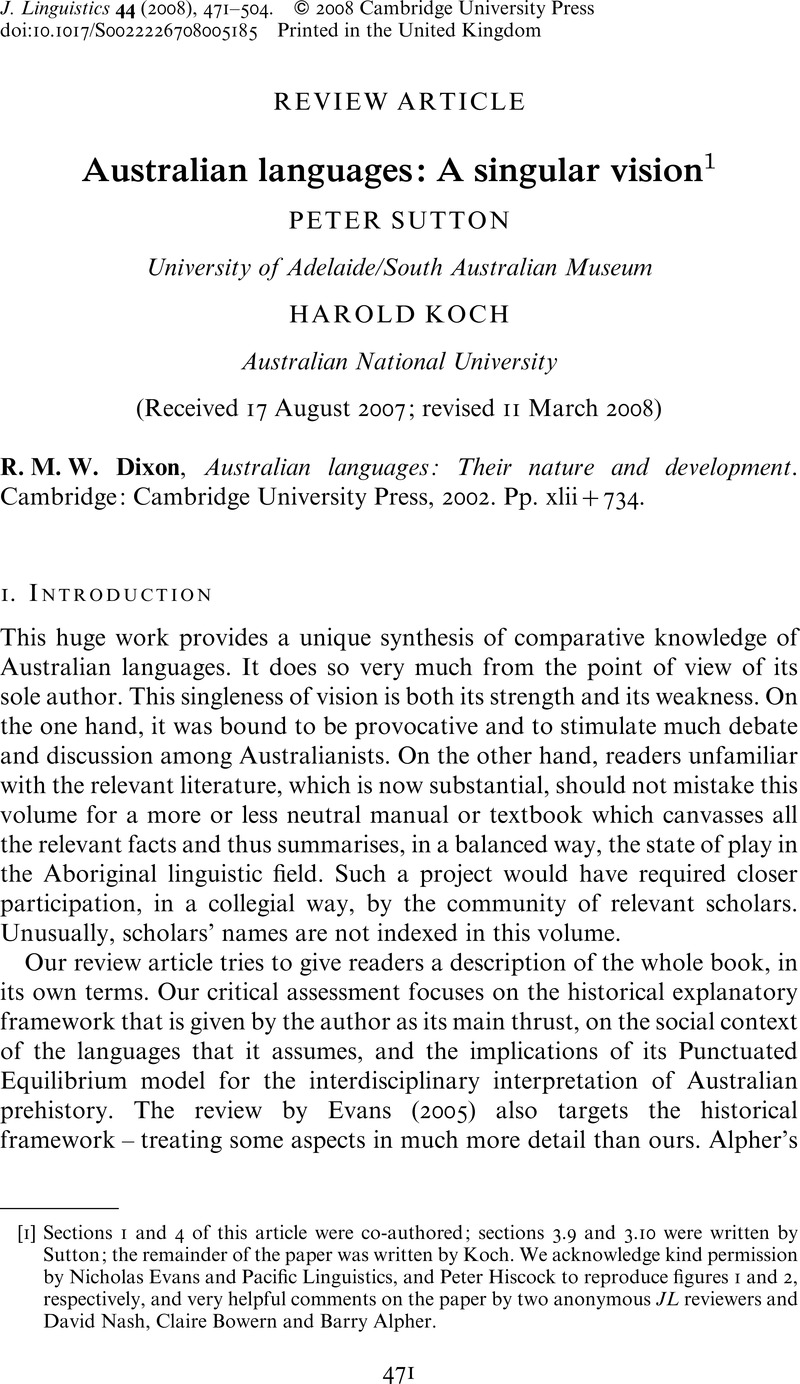Crossref Citations
This article has been cited by the following publications. This list is generated based on data provided by
Crossref.
Harvey, Mark
2009.
The Genetic Status of Garrwan.
Australian Journal of Linguistics,
Vol. 29,
Issue. 2,
p.
195.
Bowern, Claire
2010.
Correlates of Language Change in Hunter‐Gatherer and Other ‘Small’ Languages.
Language and Linguistics Compass,
Vol. 4,
Issue. 8,
p.
665.
Rumsey, Alan
2010.
Experiments in Holism.
p.
127.
McConvell, Patrick
and
Bowern, Claire
2011.
The Prehistory and Internal Relationships of Australian Languages.
Language and Linguistics Compass,
Vol. 5,
Issue. 1,
p.
19.
Berson, Josh
2012.
Ideologies of descent in linguistics and law.
Language & Communication,
Vol. 32,
Issue. 2,
p.
137.
Loakes, Deborah
Carr, Therese
Gawne, Lauren
and
Wigglesworth, Gillian
2015.
Vowels in Wunambal, a Language of the North West Kimberley Region.
Australian Journal of Linguistics,
Vol. 35,
Issue. 3,
p.
203.
Miceli, Luisa
and
Dench, Alan
2017.
The Cambridge Handbook of Areal Linguistics.
p.
732.
Gavin, Michael C.
Rangel, Thiago F.
Bowern, Claire
Colwell, Robert K.
Kirby, Kathryn R.
Botero, Carlos A.
Dunn, Michael
Dunn, Robert R.
McCarter, Joe
Pacheco Coelho, Marco Túlio
and
Gray, Russell D.
2017.
Process‐based modelling shows how climate and demography shape language diversity.
Global Ecology and Biogeography,
Vol. 26,
Issue. 5,
p.
584.
Harvey, Mark
2020.
The Language of Hunter-Gatherers.
p.
392.
Bowern, Claire
2022.
Where have all the sound changes gone? Phonological stability and mechanisms of sound change.
Linguistics Vanguard,
Vol. 8,
Issue. s5,
p.
499.





